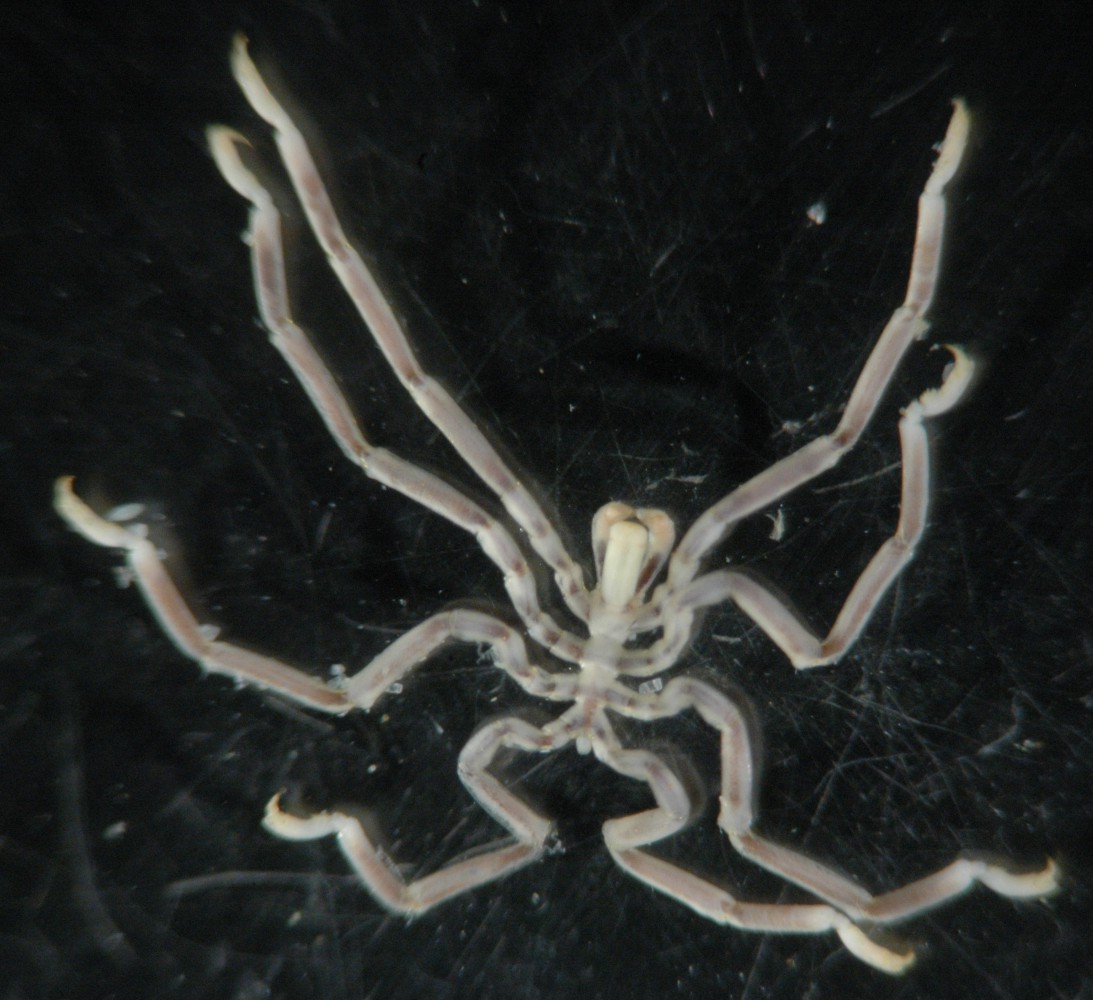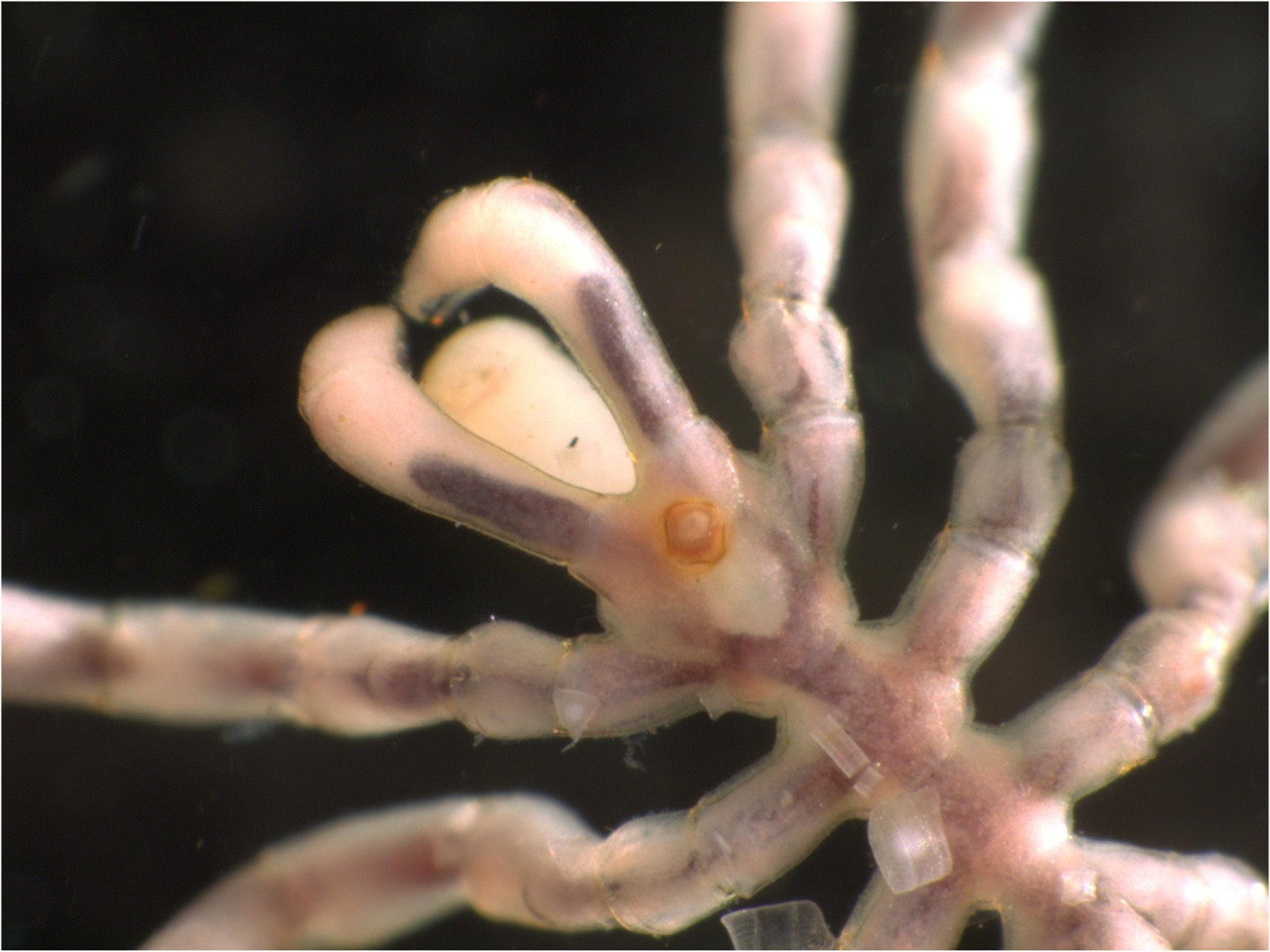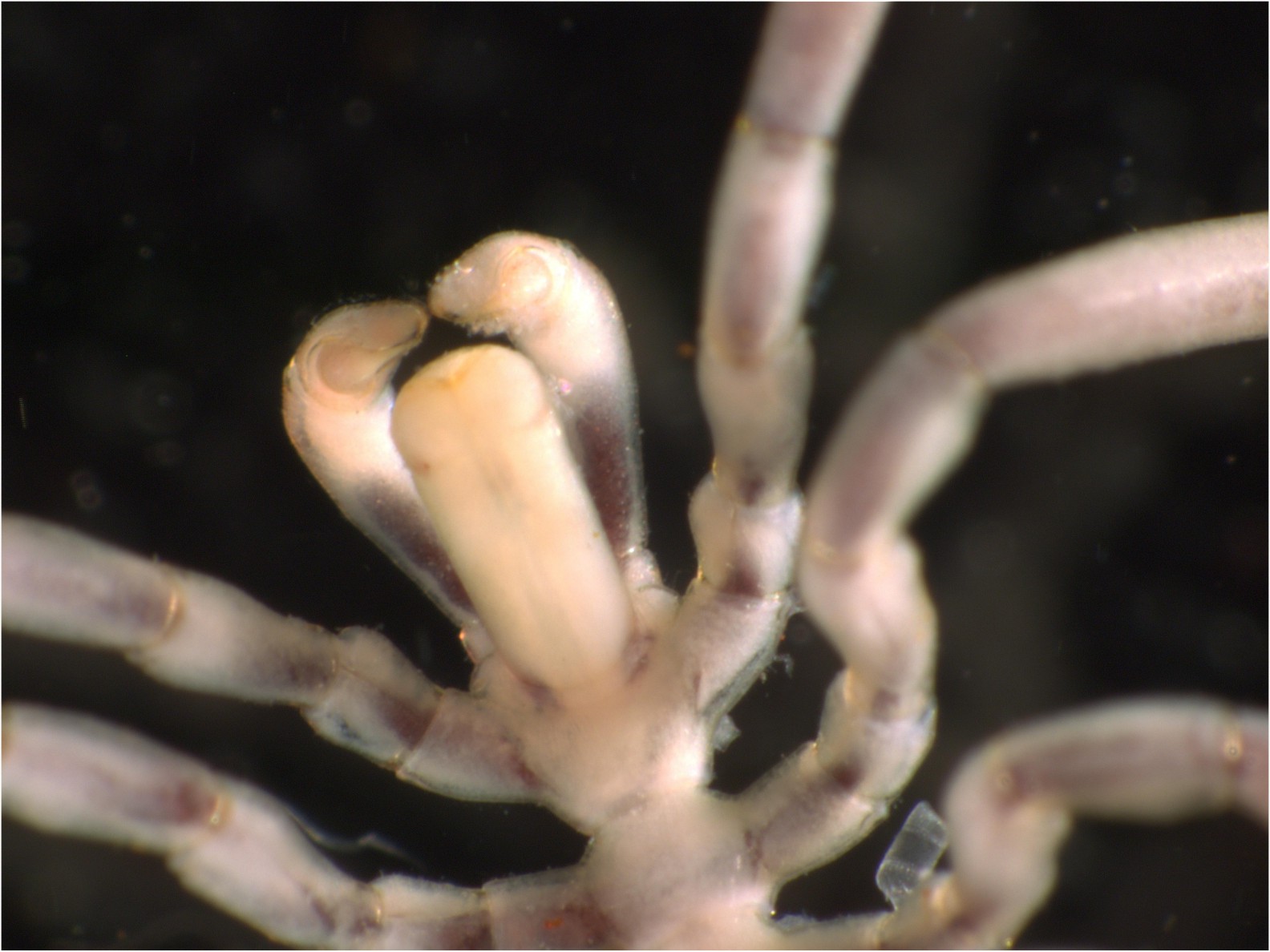Phoxichilidium femoratum (Rathke, 1799)Common name(s): Spiny-thigh sea spider, Sea spider |
|
| Synonyms: |  |
|
Phylum Arthropoda
Subphylum
Chelicerata
Order Pantopoda
Family
Phoxichilidiidae
|
|
| Phoxichilidium femoratum found by Joanna Cowles on an Epiactis ritteri anemone in a sea cave at Cape Flattery. Leg span 1.5 cm. Since no ovigerous legs are present, this must be a female. | |
| (Photo by: Dave Cowles, July 2009) | |
How to Distinguish from Similar Species: In Anoplodactylus viridintestinalis the lateral projections from the trunk which serve as the bases of the legs are very close together, virtually touching. Its intestine is bright green. Most other long-legged species have pedipalps as well as chelicerae, plus have well-developed ovigerous legs even in females. Phoxicholidium quadradentatum (not mentioned in Kozloff key) has extremely short auxiliary claws that are so small they may not even be seen.
Geographical Range: Dutch Harbor, Alaska to Laguna Beach, CA. Also common in Europe,Canada, and eastern Russia.
Depth Range: Mostly subtidal.
Habitat:
Biology/Natural
History:
Male pycnogonids carry the eggs, on special anterior ovigerous
legs which are lateral to the chelicerae
and pedipalps
(if
present) but anterior to the first pair of walking legs.
In a study of the life history of a related pycnogonid from the North
Atlantic, P. tubulariae, Lovely (2005) found that
its development
was much faster than has been reported for other pycnogonid
groups.
P. tubuluriae has a fast developmental mode
with an
encysted protonymphon
larva, with a development time of 21 days as compared to months for
other
pycnogonids. The larvae hatched and quickly infested the
hydroid
Tubularia larynx, where they lived within the
gastrovascular cavity.
Later they emerged, destroying the Tubularia
polyp. The abundance
of P. tubularia adults peaked in late summer as the
hydroid host
declined.
| Return to: | |||
| Main Page | Alphabetic Index | Systematic Index | Glossary |
References:
Dichotomous Keys:Carlton, 2007
Kozloff, 1987, 1996
General References:
Lamb
and Hanby, 2005
Ricketts
et al., 1985
Scientific Articles:
Lovely, Eric C., 2005. The Life History of Phoxichilidium
tubulariae (Pycnogonida: Phoxichilidiidae).
Northeastern Naturalist
12:1 pp. 77-92
Web sites:
General Notes and
Observations: Locations,
abundances, unusual behaviors:

This is a view of the underside of the whole animal
| The closeup photos below show the head from above and below. The large chelicerae are readily seen but there are no pedipalps. | |
 |
 |
| Dorsal view. The large chelicerae flank the proboscis, which is ventral to them. The rust-colored eye turret is visible behind the chelicerae. | Ventral view. The proboscis is prominent below the chelicerae. No pedipalps are visible. |
Authors and Editors of Page:
Dave Cowles (2009): Created original page
CSS coding for page developed by Jonathan Cowles (2007)